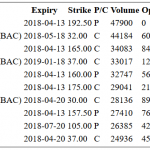A virus has spread across the markets as the first half drew to a close. Many investors have become giddy. The low vol environment was punctuated by ideas that peak in monetary accommodation is past and that the gradual process of normalization is beginning. Some investors may be exaggerating how soon the Bank of England and the European Central Bank will raise interest rates, but there seems to be little doubt about the direction of policy going forward.
It is not just the ECB and BOE. The Bank of Canada meets on July 12, and the market is pricing in around a 75% chance of a hike. The Reserve Bank of Australia and Sweden’s Riksbank meets in the week ahead, and they too will likely embrace the prospects of normalization. Ironically, it is only the US, which has seen core CPI and core PCE move lower for four consecutive months that the market doubts. Using either the Fed funds futures or the OIS market, it appears that less than a 50% chance of hike before the end of the year is discounted.
The BOJ is the other exception. It has refrained from discussing an exit strategy.Its core inflation rose 0.4% in May. The target is 2%. The core rate includes energy. If energy is excluded as well, prices in Japan are flat year-over-year, while overall household spending contracted for 15-months year-over-year through May. With the collective wisdom of the markets judging the Fed and BOJ will lag behind the other central banks in the period ahead, the dollar and yen were the poorest performing major currencies last week and for the month of June.
The Dollar Index slumped 1.6% in the last week of June. This offsets the minor gains it had recorded earlier in the month. The 1..3% decline for the month is the fourth consecutive losing month since the December 2010-April 2011 period. The 4.7% loss in Q2 is the largest since Q3 10. Although it is below its lower Bollinger Band (95.73), the other technical indicators are not over-extended, nor showing divergences. The next target is near 94.30.Below there, chart support ahead of last year’s low a little below 92.00 is sparse.













Leave A Comment